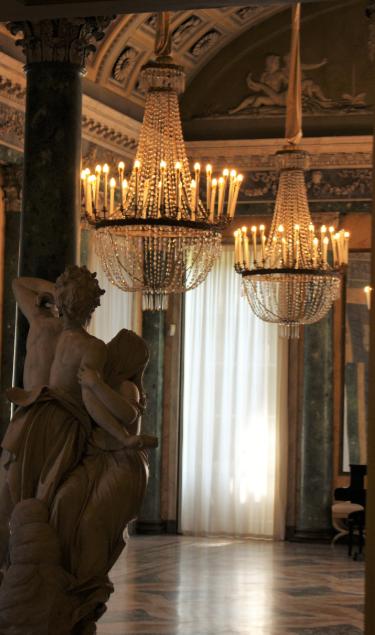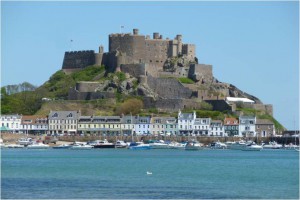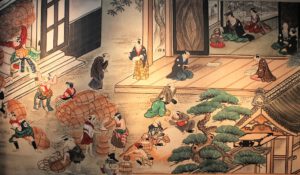 Before reading this post, please note that The Writer’s Travel Guide does not recommend travelling to Japan in the long 18th century. In all likelihood, you will not be allowed to enter the country. If you try anyway, you are committing a capital offence.
Before reading this post, please note that The Writer’s Travel Guide does not recommend travelling to Japan in the long 18th century. In all likelihood, you will not be allowed to enter the country. If you try anyway, you are committing a capital offence.
Having read this, you are still determined to give it a try? – excellent! You are of one mind with three British captains who each had an individual adventure with an island kingdom barring itself from foreign influences. And you might also find out that not all encounters have to be riddled with conflicts. Continue reading
Jane Austen, the Captain and the Smugglers of a Tiny Island
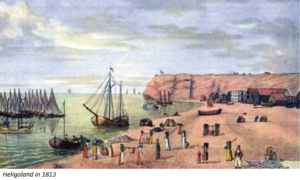 Captain Corbet James D’Auvergne could lay claim to knowing Jane Austen. The authoress mentions him in two letters to her sister Cassandra. Read more about Captain D’Auvergne connection to Jane Austen, and his achievements as Acting Governor of a tiny island in the North Sea called Heligoland.
Captain Corbet James D’Auvergne could lay claim to knowing Jane Austen. The authoress mentions him in two letters to her sister Cassandra. Read more about Captain D’Auvergne connection to Jane Austen, and his achievements as Acting Governor of a tiny island in the North Sea called Heligoland.
After a ball at the Dolphin Hotel in Southampton in December 1808, Jane Austen – proficient as ever in summing up a gentleman’s potential as a spouse – noted that Corbet James D’Auvergne was both a captain in the Royal Navy and a ship owner. The remark might have been a joke about husband-hunting, but the Captain was indeed a good catch for a lady looking for hero-material in her husband. Besides, he was still single. Any lady furthering her acquaintance with him should know, however, that he had his hands in large-scale smuggling.
Continue reading
Jane Austen: The 12 Best Film Locations to Visit
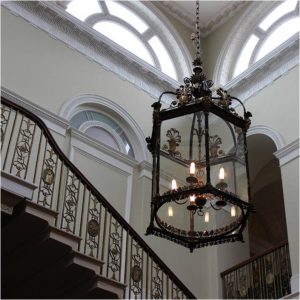 Do you love the novels of Jane Austen?
Do you love the novels of Jane Austen?
Why not visiting the 12 best film locations of Jane Austen adaptations.
The trip will lead you to the most beautiful places of England with lots of 18th-century history. Continue reading
A Writer’s Travel Guide: Inside Napoleon’s and Marie-Louise’s Home in Compiègne
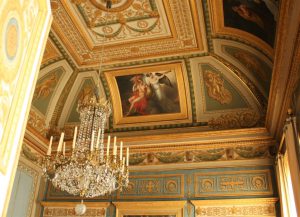 Compiègne was one of three seats of the French royal government. The royal residence we know today, the Château de Compiègne, was built for Louis XV. Napoleon restored the château after it was left gutted during the French Revolution, and he ordered it to be made habitable again in 1807. He had its layout altered, a ballroom added, and the garden replanted.
Compiègne was one of three seats of the French royal government. The royal residence we know today, the Château de Compiègne, was built for Louis XV. Napoleon restored the château after it was left gutted during the French Revolution, and he ordered it to be made habitable again in 1807. He had its layout altered, a ballroom added, and the garden replanted.
But what did the restless French emperor do with another palace? Well, he lived there with his young bride, Marie-Louise, and it was there where they spent their first night together. Continue reading
Writer’s Travel Guide: The British Tourist and Napoleonic Milan
- How to get to Milan in the 18th century
- Where to stay
- Dangers and annoyances
- Napoleonic sight-seeing in Milan
Travelling to Italy had always strongly appealed to the British aristocracy. Milan had been a favourite since Maria Theresia, sovereign of the Holy Roman Empire, remodelled the city in the second half of the 18th century: Milan featured lovely public gardens, and the fabulous opera house La Scala. But Alas!, visiting this splendid city came to a halt for British travellers from 1796 to 1814, when Napoleon had occupied Milan and most parts of Northern Italy. It was only after the Battle of Waterloo that British tourists could visit Milan again. One of the most famous tourists was Lord Byron, who spent two weeks in Milan in October 1816.
Lord Byron had always been an admirer of Napoleon. In Milan, he was lucky to get acquainted with the French essayist Stendhal (Henri Beyle by real name). Stendal had worked under Napoleon’s Secretary of State. Byron and Stendal met almost every evening for several weeks, and Byron questioned Stendal about his hero.
Some British tourists took a special interest in seeing the places of Napoleon’s power. Thus, locations connected with Napoleon became a curiosity for tourists. I have selected some of them for you in this post. Find out more about Napoleonic Milan: Continue reading
Writer’s Travel Guide: The British and the Grand Tour to the Kingdom of Naples and Sicily (Part 2)
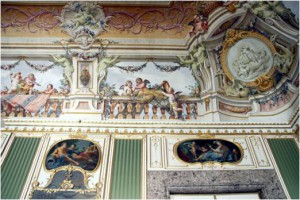 Find in this travel guide for the 18th century:
Find in this travel guide for the 18th century:
- The Antiquities Trail:
– Herculaneum and Pompeii
– Paestum - Practical Tips for Travellers
– Where to Stay
– Specialities - Danger & Annoyances
- Money & Measurements
The Kingdom of Naples and Sicily became a popular destination for British tourists with the discovery and excavation of ancient ruins in the mid 18th century. The art found at Herculaneum and Pompeii sparked the European Neo-classicism: It was the motifs from these ancient ruins that featured on stylish furnishings in England.
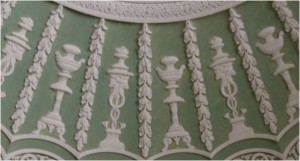 Architects, artists and their rich patrons braved the inconveniences of a long journey to see the celebrated ruins themselves.
Architects, artists and their rich patrons braved the inconveniences of a long journey to see the celebrated ruins themselves.
In this part of ‘Writer’s Travel Guide: The British and the Grand Tour to the Kingdom of Naples’ we discover the famous ancient sites as a travel destination for Grand Tourists of the Romantic Age. Continue reading
Writer’s Travel Guide: The British and the Grand Tour to the Kingdom of Naples and Sicily (Part 1)
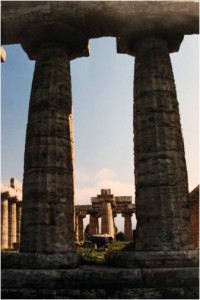 Find in this travel guide for the 18th century:
Find in this travel guide for the 18th century:
- The Destination: Facts & Figures
- Getting There & Around
- Things to See & Do in Naples
– Neapolitan Dolce Vita
– Balls, Suppers and Assemblies
– Culture & Entertainment - Nature & Activities
– Climbing Mount Vesuvius
– Watersports
For British travellers, Italy was an essential destiny of the Grand Tour. However, most travellers didn’t go farther than Rome. Only the adventurous or scholarly continued to the South, to ‘The Kingdom of Naples and Sicily’. This was to change with the discovery and excavation of the ruins of Pompeii, Herculaneum, and Paestum in the mid 18th century.
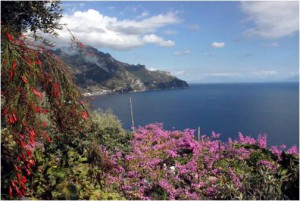 Eager to see the sites of Antiquity themselves, architects, artists and their rich patrons ventured down the long road to Naples, braving brigands, mosquitoes and heat.
Eager to see the sites of Antiquity themselves, architects, artists and their rich patrons ventured down the long road to Naples, braving brigands, mosquitoes and heat.
- How did they travel?
- What would they see and do in 18th-century Naples?
- Which sites would they visit?
- Where would they stay?
With this post, Regency Explorer provides a travel guide to the ‘Kingdom of Naples and Sicily’ for travellers of the Romantic Age. Continue reading
Gossip Guide to the Kingdom of Naples: Inside the Palace of Caserta
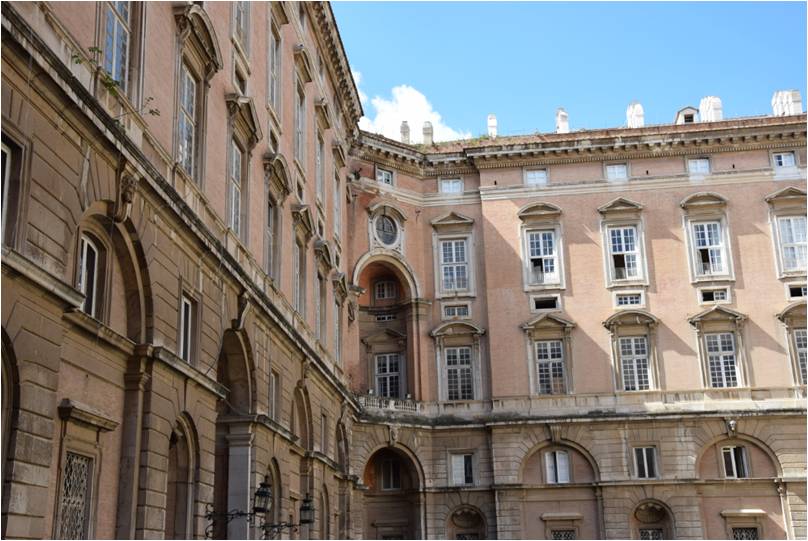
Find in this gossip guide for the 18th century:
- Palace, Pomp and Politics
- The British Ambassador as Tomb Raider
- Love & the Palace
- Shocking: Emma and Nelson!
- A King from France & the English Princess
Writer’s Travel Guide: Lynton & Lynmouth
In this post:
- From bleak prospects to new chances
- Exclusive to the bold and daring?
- Poets and painters lead the way
- Alarm! A radical at Lynmouth
- Lynton and Lynmouth as settings of a novel – plot bunnies included
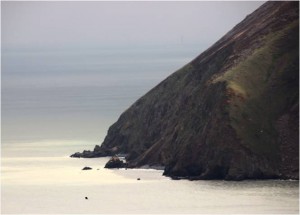 Reverend John Skinner shuddered as he looked at the narrow path ahead. The passage, just four feet or a meagre 1.2 m wide, was cut on the side of a cliff that descended steeply towards the sea. He dismounted his horse and continued his dangerous journey on foot, leading the animal behind him.
Reverend John Skinner shuddered as he looked at the narrow path ahead. The passage, just four feet or a meagre 1.2 m wide, was cut on the side of a cliff that descended steeply towards the sea. He dismounted his horse and continued his dangerous journey on foot, leading the animal behind him.
The Reverend enjoyed discovering the wilderness of Exmoor. In 1801 he reached Lynton and Lynmouth, two tiny villages on the North Devon coast. ‘To travelers not accustomed to a mountainous country, the approach to this place would have deemed impassable’, he noted in his journal. John Skinner was among the first who made their way to Lynton and Lynmouth to admire the view and dramatic scenery. More were to follow. And this was all because of the French.
Writer’s Travel Guide: The Jersey Connection
In this post:
– Working as an agent in the 18th century: Tasks and Methods
– Deadly Dangers
– A Thorn in Napoleon’s Side
Angelique Le Tourneur was a spy. She looked like an ordinary fisherwoman, and her little boat sailing from village to village along the French coast was loaded with fish. But Angelique belonged to a network of spies that was operated from the Isle of Jersey for 18 years.

